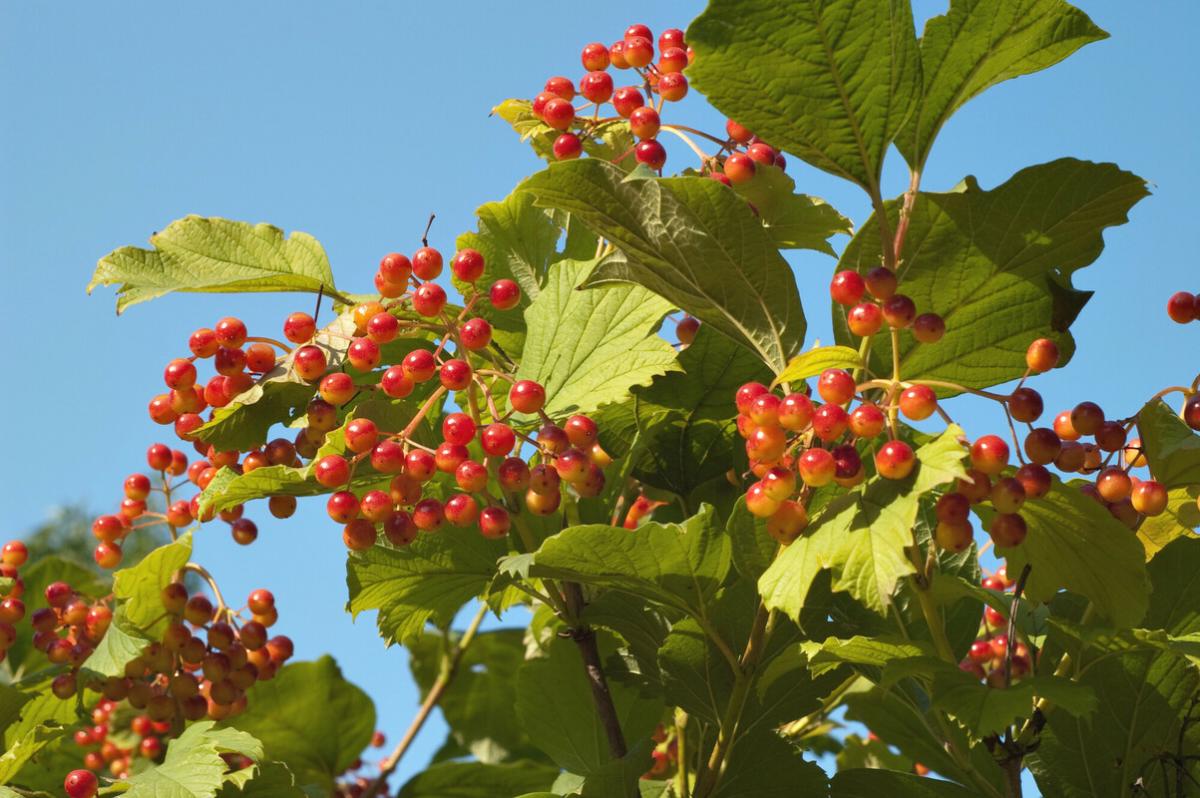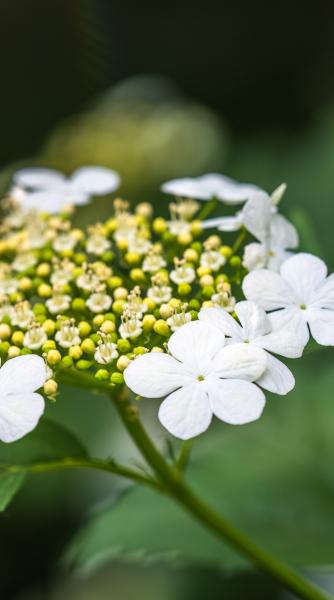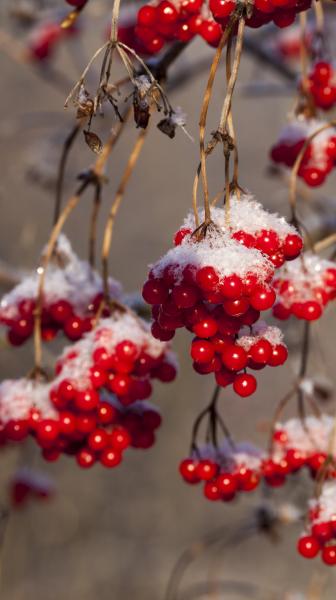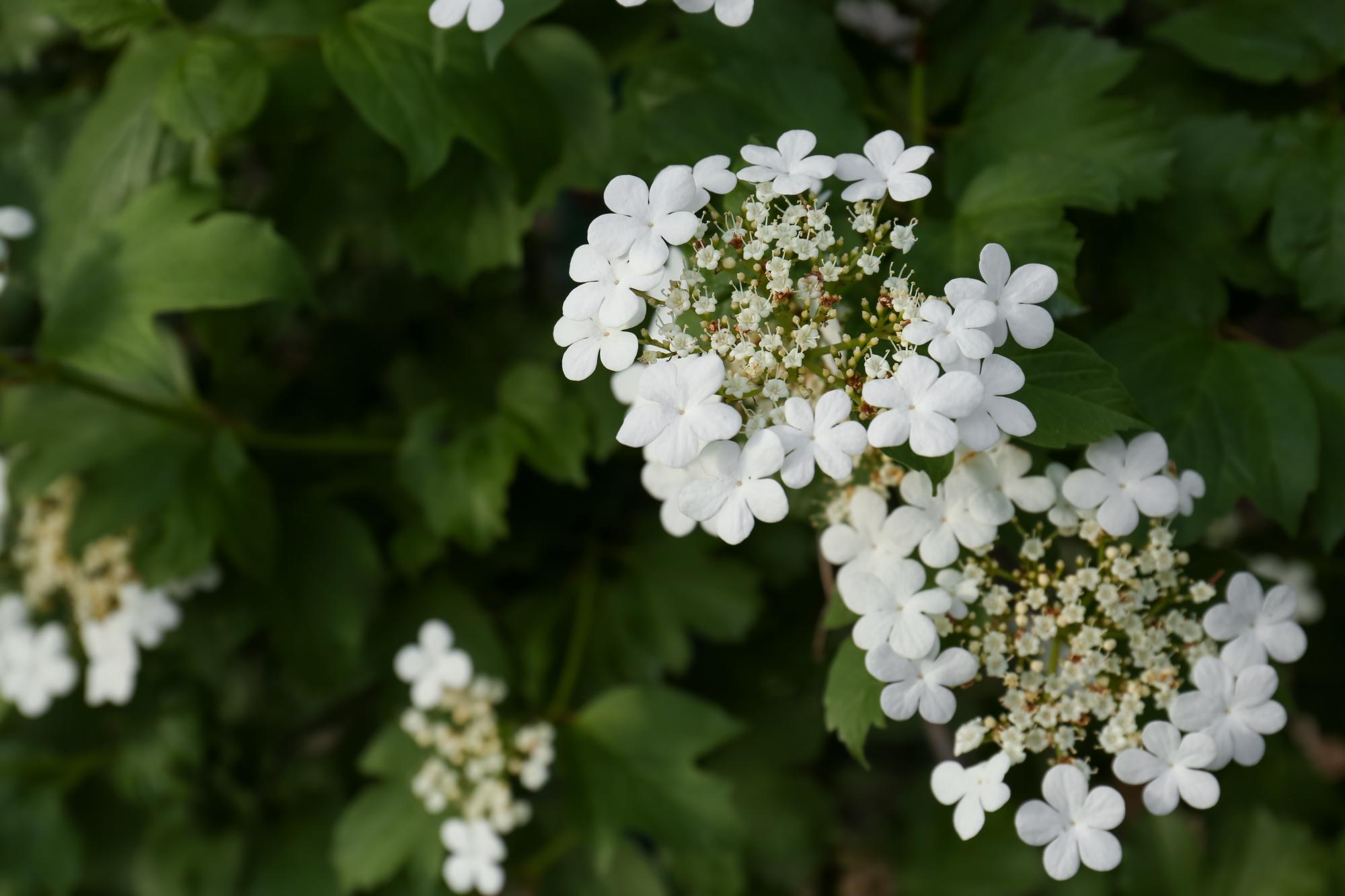
Species Name: Viburnum opulus
Guelder rose is a deciduous shrub often found along woodland edges. It can grow up to 4m tall and has vibrant red berries in the autumn that are an important food source for many birds.
The guelder rose has grey bark that is pale and smooth - older trees have a rougher texture. The buds are in opposite pairs on a grey twig that ends in a withered stalk. The buds themselves are reddish-green similar to pomegranate seeds. The leaves have three lobes with serrated edges and fine hairs on the underside.

The flowers are in branched clusters of small flat white flowers surrounded by larger white flowers.

The distinct bunches of red berries appearing in the autumn have an unpleasant odour. These berries can be eaten when cooked and turned into jam. However, they are mildly poisonous when raw.

Read our Forest Foraging article for information on responsible foraging.
The guelder rose is found at low altitudes in the UK, growing in damp conditions as well as in hedgerows. Guelder rose can be found in many areas of the Heart of England Forest along the edge of woodlands.
The guelder rose plays a role in Slavic mythology where it features in many rituals, songs, and traditional designs - it symbolises fire. It is the national symbol of Ukraine where it is known as Kalyna. In Slavic mythology the Kalyna Bridge is believed to connect the worlds of the living and dead.
The guelder rose has many uses in herbal medicine. It is mainly used as a muscle relaxant as it is effective in relieving muscle cramps.
The guelder rose is an ancient woodland indicator. The berries are a vital food source for many birds such as the bullfinch, and the flowers provide pollen and nectar for various insects like hoverflies. The scrub canopy provides shelter and protection to many birds and small mammals.
The name guelder rose relates back to the Dutch province of Genderland.
2% of the trees we are planting in the Forest this season are guelder rose.




